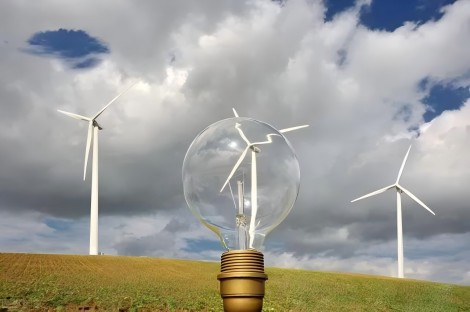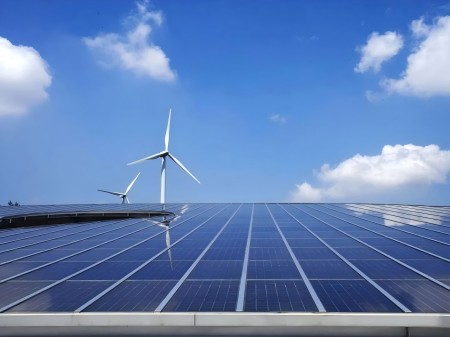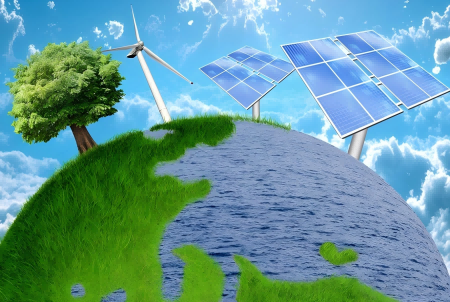With the transformation of the global energy structure and the continuous advancement of technology, new energy cables are gradually becoming the core materials in the field of power transmission and distribution. New energy cables, as the name implies, are a type of special cables used to connect fields such as new energy power generation, energy storage and new energy vehicles. These cables not only have the basic electrical performance of traditional cables, but also must cope with many challenges in new energy applications, including extreme climatic conditions, complex electromagnetic environments and high-intensity mechanical vibrations. This article will explore the future of new energy cables and their wide application prospects.
Unique performance and challenges of new energy cables
The design and material selection of new energy cables are unique to meet the needs of different fields. In the field of solar power generation, photovoltaic array cables are used to connect photovoltaic panel components. These cables are exposed to the outdoors all year round, so it is crucial to resist ultraviolet radiation and material aging. Photovoltaic cables usually use highly weather-resistant XLPE insulation materials and tear-resistant polyolefin outer sheaths to ensure their long-term stable operation. Inverter connection cables need to have good fire resistance, so flame-retardant PVC cables are the first choice.
The requirements for cables in the field of wind power generation are equally stringent. The cables inside the generator need to be able to adapt to complex electromagnetic interference. The common solution is to use copper wire braiding for shielding to reduce electromagnetic interference. In addition, tower cables, control cables, etc. in wind power generation systems also need to have high reliability and weather resistance to cope with complex and changeable natural environments.
The field of new energy vehicles has higher requirements for the quality and performance of cables. High-voltage power cables are responsible for connecting battery packs, motors and charging systems. They use high-purity copper conductors with XLPE insulation materials to reduce energy loss. In order to prevent electromagnetic interference, the cable design combines a composite shielding layer of aluminum foil and copper wire. AC and DC charging cables support different charging needs and methods, emphasizing high current carrying capacity and excellent insulation performance to ensure the safety and performance of new energy vehicles.
Energy storage systems also rely on cable support. Battery connection cables must be able to withstand rapid changes in current and thermal stress, so electrical insulation materials such as XLPE or special rubber are used. The cables connecting the energy storage system to the grid must meet high-voltage standards and have good environmental adaptability to ensure the safety of power transmission.
Market demand and growth of new energy cables
In recent years, with the continuous breakthrough and popularization of new energy technologies, industries such as wind energy, solar energy, and new energy vehicles have ushered in explosive growth, and the demand for new energy cables has also risen sharply. Data shows that the scale of new energy projects to be started in 2024 will reach a new high, with a total annual start-up volume of 28 million kilowatts, including 7.13 million kilowatts of photovoltaic power generation projects, 1.91 million kilowatts of energy storage projects, 13.55 million kilowatts of wind power projects, and 11 million kilowatts of new energy vehicle battery replacement projects.
As an important link in the photovoltaic industry chain, photovoltaic cables have very broad development prospects. China, the United States and Europe are the three regions with the largest new photovoltaic installed capacity, accounting for 43%, 28% and 18% of the global total, respectively. Photovoltaic cables are mainly used in DC circuits in negative grounding devices of power supply systems. Their voltage levels are usually 0.6/1kV or 0.4/0.6kV, and some are as high as 35kV. With the advent of the parity era, the photovoltaic industry is about to enter a stage of explosive growth. In the next 5-8 years, photovoltaics will become one of the world’s main sources of electricity.
The rapid development of the energy storage industry is also inseparable from the support of new energy cables. The demand for high-voltage DC cables, which are mainly used to connect the charging and discharging equipment and control equipment of energy storage power stations, and medium and low-voltage AC cables, which are used to connect transformers, distribution cabinets, and low-voltage equipment such as lighting and control in energy storage power stations, will also increase significantly. With the promotion of the “dual carbon” goal and the advancement of lithium battery technology, the energy storage industry will usher in a broader development space, and new energy cables will play an important role in it.
Technical innovation and environmental protection trends of new energy cables
The development of new energy cables requires not only high performance and reliability, but also environmental protection and low carbon requirements. The research and development and production of environmentally friendly, high-temperature resistant, and special performance wires and cables have become an important trend in the industry. For example, the development of cable products suitable for high temperature environments can ensure the stable operation of equipment such as wind power and solar power generation in extreme environments. At the same time, with the construction of smart grids and the access of distributed power sources, wires and cables also need to have higher intelligence and reliability.
Cable manufacturers are actively investing in research and development and have launched a series of special cable products to meet the higher requirements for cables in the new energy field. These products include photovoltaic module support cables that are more suitable for flat roofs, solar cell module lead wires for fixed installation, cables for tension wire pulleys for tracking systems, and cables for charging piles with better high temperature resistance.
Green development has become a global consensus, and electricity, as a basic industry of the national economy, will inevitably develop in the direction of green and low-carbon. Flame-retardant, halogen-free, low-smoke, and low-carbon environmentally friendly wires and cables are increasingly sought after by the market. Cable manufacturers reduce the carbon emissions of products by improving materials and processes, and develop special cable products with higher added value to meet the needs of specific scenarios.
Future Outlook
New energy cables, with their unique performance, are providing strong support for the development of the new energy industry. With the increasing maturity of new energy technology and the continuous expansion of market demand, the demand for new energy cables will continue to rise. This not only promotes technological innovation in the cable industry, but also promotes the development of related fields such as material science, manufacturing processes, and testing technologies.
In the future, with the continuous breakthroughs in technology, the performance of new energy cables will continue to improve, laying the foundation for the wider application of green electricity around the world. More high-quality new energy cables will gradually enter our lives, help the transformation of the global energy structure, and contribute more to sustainable development. The cable industry will also conduct deeper exploration and practice in the direction of green development, and enhance the competitiveness and profitability of enterprises by creating intelligent and digital operation models, promote the coordinated development of upstream and downstream enterprises in the industrial chain, and ultimately achieve the goal of high-quality development.
As an important part of the future power road, new energy cables have broad application prospects and huge development potential. With the transformation of the global energy structure and the continuous advancement of technology, new energy cables will surely play a more important role in the global energy revolution.
Post time: Dec-06-2024




